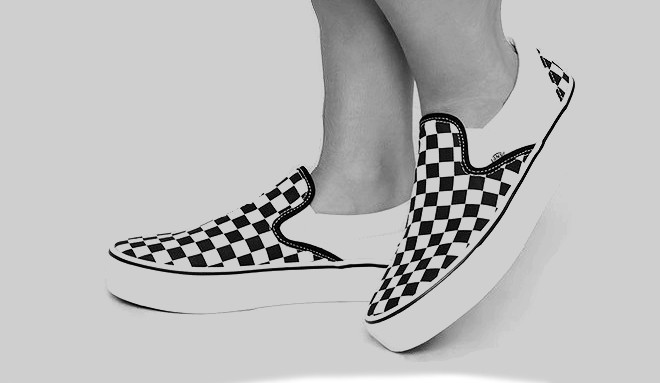Streetwear clothing reigns supreme in high school halls: the materialistic mindset of teenagers
October 2, 2019
Although considered “street” wear clothing, skateboard brands such as Supreme, Vans, and Champion have found their way into Dougherty halls. Designed for comfort yet fashionable to say the least, these trendy pieces of clothing have raised their prices to match designer brands such as Gucci, causing teenagers to value the cost of a Supreme t-shirt over their liking for it; essentially creating a more materialistic mindset for students at DV.
Once popular in the ‘90s, these trademark brands have made a comeback, now targeting their clothing towards teenagers. It began as a small group of people, specifically California surfers, skateboarders and the hip-hop community, who wore these styles of comfortable clothing. As fashion has developed to become more about comfort, as seen through the rise of athleisure, streetwear culture has become more relevant than ever before. It has become so popular that teenagers participating in this movement have been labeled as “hypebeasts”, or a group of people that follow trends in fashion, such as streetwear, for the purpose of making a social statement.
Economics teacher at DV, Ms. Cynthia Oji, believes that although the rise of streetwear will be temporary, it is reminiscent of previous trends in the fashion industry.
“Currently we’re living in an era where what is cool is baggier clothing. It’s the early ‘90s kind of aesthetic. In a few years, perhaps it will change to the early 2000s style. It’s a way of rejecting the late 2000s standards,” Ms. Oji said.
But, only certain brands have been able to successfully become part of popular streetwear culture.
Junior Jerico Tancioco, who started a sneaker upgrading business, called Sneaker Treatment, is well aware of the selective popular brands that he is asked to design. He has noticed that more of his work has been involved with shoes such as Vans, Jordans, Air Force 1s, and Yeezys. More specifically, he has noticed the competition between teenagers at DV, often times his own customers, in terms of what they wear.
“Teens are drawn to how they appear at school, so they always try to one-up each other by wearing the freshest shoes,” he said.
Although this can be said for teenagers around the world, the phenomenon is especially relevant at Dougherty, because of its privileges and the competitive environment students are surrounded with on a day to day basis. It reflects the fact that the first things students judge others on is their personal possessions. In this way it often comes down to what’s on the outside because it is easier to make that assumption on someone without truly getting to know them. Clothing is a factor that attributes to one’s outside appearance, and because students are aware that they are being judged based on their worldly possessions, they often attempt to control those judgements by investing in expensive or rare clothing. They want to be able to stand on top of the imaginary pedestal students create in their heads. It essentially is the root cause of a materialistic mindset.
“I feel like when I wore streetwear it made me brand conscious. It didn’t negatively impact my view of others but it positively affected my view of others when they wore Supreme. I thought better of them because they invested so much in clothing which is not the best thing because it’s even more expensive now,” said Amritha Ramesh, a junior at DV who has been a part of the streetwear culture herself.
Teens are drawn to the exclusivity of these brands, who are at a high demand but only release limited edition pieces periodically. With this increasing demand, Vogue Business reports that streetwear brands have become culturally equal to luxury brands such as Gucci and Fendi. Those luxury brands have collaborated with streetwear brands, as if they’re on the same level, and the resulting clothing items are sold at a significantly higher price than the original pieces. According to Vogue, with the 2017 Louis Vuitton x Supreme collaboration, a hoodie was up for resell at a whopping price of $29,999. Supreme has now become a billion dollar company, topping classic brands such as Abercrombie and running up against luxury brands such as Armani. Streetwear has come to a point where they are almost equal to the seemingly high-end, untouchable luxury brands. Except with these streetwear brands, the clothing is more attractive and appealing to anyone, teens especially, because of its comfortable styles and somewhat affordable starting prices. It is almost as if with the classic, unmistakably bright logo, you are wearing a limited, exclusive, and seasonal luxury item. People start to pay these excessive amounts for the everyday clothing items that streetwear brands sell such as t-shirts, hoodies, and shorts. But why would they go such lengths to purchase such a seemingly common piece of clothing? In the end, they are not paying for the clothing itself, but the logo.
“The idea of rarity makes people feel more elite. Dougherty has such a competitive atmosphere in most facets. Even within that people are finding competition. Some people are truly interested, but some people think that if they don’t have those things, they are falling behind… It seems to be a way that you can stand out as being cool and wealthy without saying it out loud among the rest of the students,” said Oji.
It is unfair to generalize everyone who wears streetwear as bandwagons because there are people who find an identity through their fashion choices, namely streetwear. However there is a distinct difference between the people who geniunely enjoy spending reasonable amounts of time in investing in streetwear clothing, and the people who spend money on the clothing just to fit their peer’s standards. Students who actually find their taste of fashion through streetwear are put side-by-side with those who want to fit the social norm. Tancioco is one of them.
“I decided to wear these brands because they appeal to me, and I feel like I can portray myself the best with these types of shoes because for me, I am heavily interested in designing shoes. I wear these shoes to express who I want to be in the future,” he said.
But, most students are influenced to wear these brands by factors such as social media and their favorite rappers, instead of a potential future in streetwear design like Tancioco. Streetwear brands like Champion recognize that their target audience are teenagers, and therefore their target method for selling would be through social media. Even celebrities Over the years, these brands have become “this ‘open-source’ platform where they allow pop culture to help guide and influence how they are positioned with the consumer today”, according to Erinn Murphy, senior research analyst at Piper Jaffray. This ultimately creates an almost direct communication method with their audience. Because teenagers are able to see what is trending on a daily basis, and visualize what the social standards look like through a swipe on Instagram, they are more likely to buy into the idea that they too need to be a part of the pop culture that everyone happens to already be in.
“It creates pressure on people to keep up with the streetwear trend and adapt to the fast changes, even though they’ve already spent money on the expensive clothing,” said Ramesh.
This idea will inevitably lead to a materialistic mindset where a student walking down the DV halls would mentally “accept” their peer wearing a Diamond hoodie simply because now they know that that student has the ability to afford a name brand piece of clothing. Placing people into categories based on goods makes it easier for them to determine the social status and what they themselves need to “live up to”. It’s a subconscious note that “oh yeah, they’re different”, when in reality these brands have become so popular that they no longer differentiate an individual in terms of fashion. In this case, now, the only difference is between teenagers who do wear streetwear brands versus the ones who don’t. Regardless, the problem is not the brands themselves, but the materialistic perspective fueled by those brands: the need to own them, which is what stresses teenagers — the last thing needed at such a competitive school like Dougherty.
At the end of the day, what students need to remember is that the brand-driven mindset they hold right now will cause them to lose sight of their own identity. It is important to recognize that no Offwhite hoodie can fixate a person into a specific social standard, and that no brand name is worth risking the creativity and freedom that comes with fashion.
“Be authentic to yourself. We have a limited amount of money and a limited amount of time. I would encourage people to actually enjoy the things they spend their money on and reflect on if the trade-offs are worth it,” said Oji.



